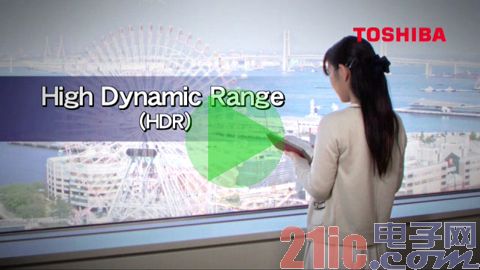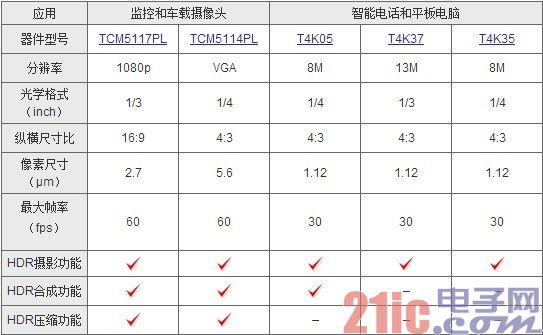High dynamic illumination rendering technology of CMOS area array image sensor
High dynamic range (HDR) This article refers to the address: http:// A feature of High Dynamic Range (HDR) imaging is the ability to take images with wide contrast between the brightest and darkest areas. By extending the dynamic range, it helps to make such images look more natural. Toshiba's image sensor has developed the HDR function to correct scenes with high contrast and produce more natural still and video captured images. Toshiba's HDR capabilities reduce the inherent blur and false colors created by HDR synthesis, providing smoother and clearer video. Toshiba HDR: Making smooth, vibrant images Static image HDR effect example Movie HDR effect example Toshiba HDR: Using single frame frame mode There are single and multi-frame HDR methods. Toshiba's image sensor uses a single-frame HDR scheme. Single-frame HDR... Take pictures with different interlaced exposures at the same time and combine them into a single HDR image. Toshiba HDR: Single HDR example Multi-frame HDR... Combines captured multi-frame pictures with different exposure times onto a single HDR image. Multi-frame HDR example Toshiba HDR: Features Video with faster frame rate To form a single HDR image, multi-frame HDR must capture multiple frames of short- and long-time exposure of a scene, while single-frame HDR requires only one picture. Therefore, the frame rate of a single-frame HDR captured video is faster than multi-frame HDR. The image sensor provided by Toshiba supports a fast frame rate of up to 60 frames in full HD resolution. Provide smooth video Long exposures can blur moving objects. To solve this problem, Toshiba HDR combines the images captured in short and long exposures into one frame. This approach helps to reduce the dynamic blur that is typically caused by HDR synthesis, providing a smoother video. Brighter colors, less fake colors Shooting moving objects with multi-frame HDR results in dynamic blurring between adjacent frames because their images differ in the target area of ​​different frames. Combining these pictures into a single HDR image can result in false colors. Since single-frame HDR combines captured short- and long-time exposure lines into a single HDR image, it reduces motion blur. Therefore, single-frame HDR can provide images with brighter colors and fewer false colors. A solution to low resolution Since single-frame HDR uses different exposure times for different shapes (see the "Single Frame Method" diagram), it typically has a lower resolution in the vertical direction. To improve vertical resolution, Toshiba's single-frame HDR integrates innovations based on target application and resolution requirements. Toshiba's image sensors, designed for smartphone and tablet applications, provide up to twice the pixels in the vertical direction, while image sensors for surveillance and car camera applications use a unique approach. HDR compression The pixel data of the synthesized HDR image exceeds 10 bits of data, and in order to perform other types of image processing, the HDR pixel data must be compressed to use less bits of data. In general, there are two compression methods that do this: global tone mapping applies the same tone curve to the entire image, while local tone mapping only applies tone curves to the partial image. Toshiba's HDR function performs a unique compression method that was first developed by Toshiba based on local tone mapping technology. It helps reduce false colors and reduces contrast loss while maintaining a natural hue. HDR image sensor product lineup
Rechargeable Handheld Vacuum cleaner: This
Mini Vacuum Cleaner can be used for cleaning hidden dirty of notebook keyboard,
printer, pet food, office, kitchen table, or other small household appliances.
Car mini vacuum cleaner: This Usb Vacuum
cleaner can be used for cleaning car vent, dashboard, storage cabinet, sand,
dust, paper, food debris, and so on.
Rechargeable wireless vacuum cleaner: this
vacuum cleaner power supplied by usb port, which is very easy and convenient to
use and store.
Easy to use: this mini vacuum cleaners`
filter can be washed by water. Just open the dust pot and take it out, then
wash it clean and use it again after it dry.
Cordless Vacuum Cleaner,Cordless Mini Vacuum,Cordless Car Vacuum,Rechargeable Handheld Vacuum SHENZHEN HONK ELECTRONIC CO., LTD , https://www.honktech.com



